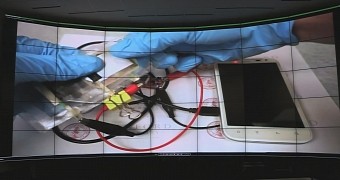The biggest problem smartphones have these days is battery life. When handset makers put bigger batteries inside their phones, these phones usually become larger and heavier, not to mention that it takes a longer time to recharge them.
Some companies have found ways to make this situation more bearable for consumers by implementing various technologies into their products, such as wireless charging or fast charging.
However, none of these solutions can actually replace the fact that smartphone batteries have a short life. There are already lots of smartphones on the market that promise you can recharge their battery in a little above 1 hour.
That's not too long, but you will still need access to an electrical outlet while you're on the move. But what about a battery that could recharge from 0 to 100 in just one minute.
Researchers at Stanford have created an aluminum-ion battery that allows for super-fast charging times. The battery is still a prototype and needs small improvements before it can be produced in large quantities.
Apart from the fact that it can be recharged very fast, the aluminum-ion battery eliminates high manufacturing costs. Unlike lithium-ion battery that may occasionally burst into flames, this particular battery won't catch fire even if you decided to drill through it.
Last but not least, the rechargeable aluminum battery is meant to replace the alkaline batteries, which are bad for the environment.
Small improvements are still needed before mass production
“People have tried different kinds of materials for the cathode. We accidentally discovered that a simple solution is to use graphite, which is basically carbon.
“In our study, we identified a few types of graphite material that give us very good performance,” said Stanford University professor of chemistry Hongjie Dai.
Another aspect that makes the new aluminum-ion battery better than the current batteries is durability. For example, a typical lithium-ion battery should last for about 1,000 charge-discharge cycles, but Stanford's prototype battery was able to withstand more than 7,500 cycles without any loss of capacity.
The only thing that needs to be improved so that mass production can start is the voltage. The aluminum-ion prototype battery produces only half the voltage of a standard lithium battery.
Stanford researchers hope that by improving the cathode material their battery could eventually produce a higher voltage and energy density. Here is hoping they will be successful in their endeavor.

 14 DAY TRIAL //
14 DAY TRIAL // 